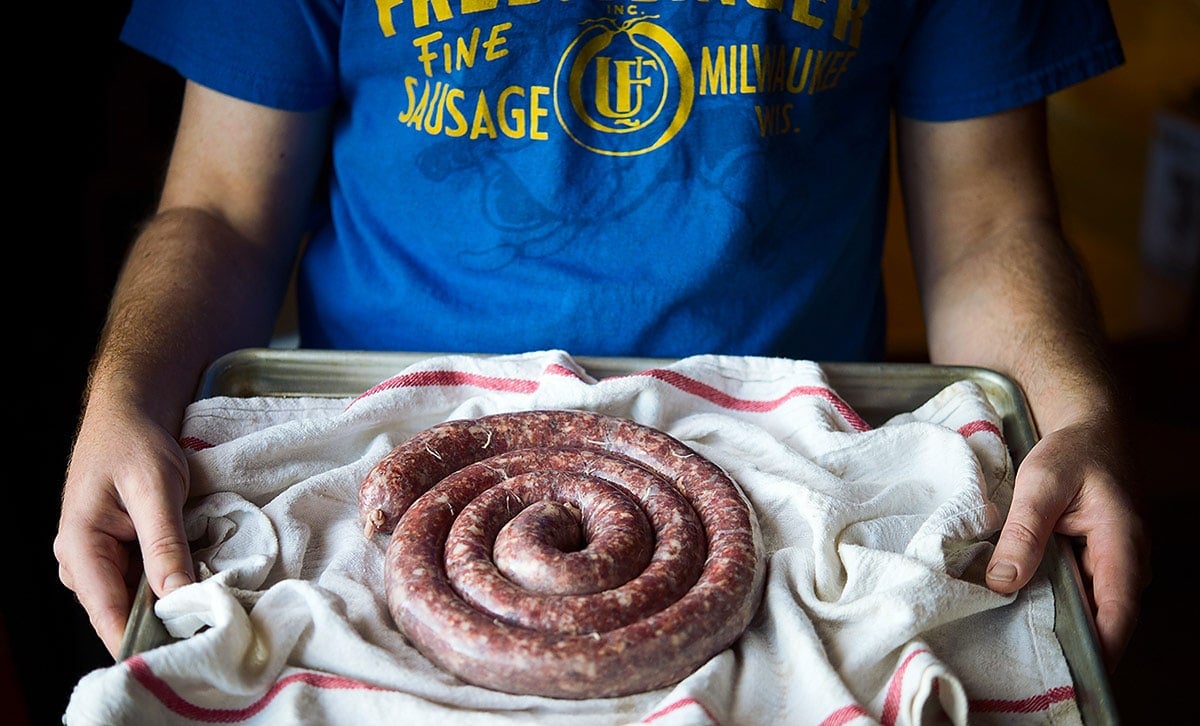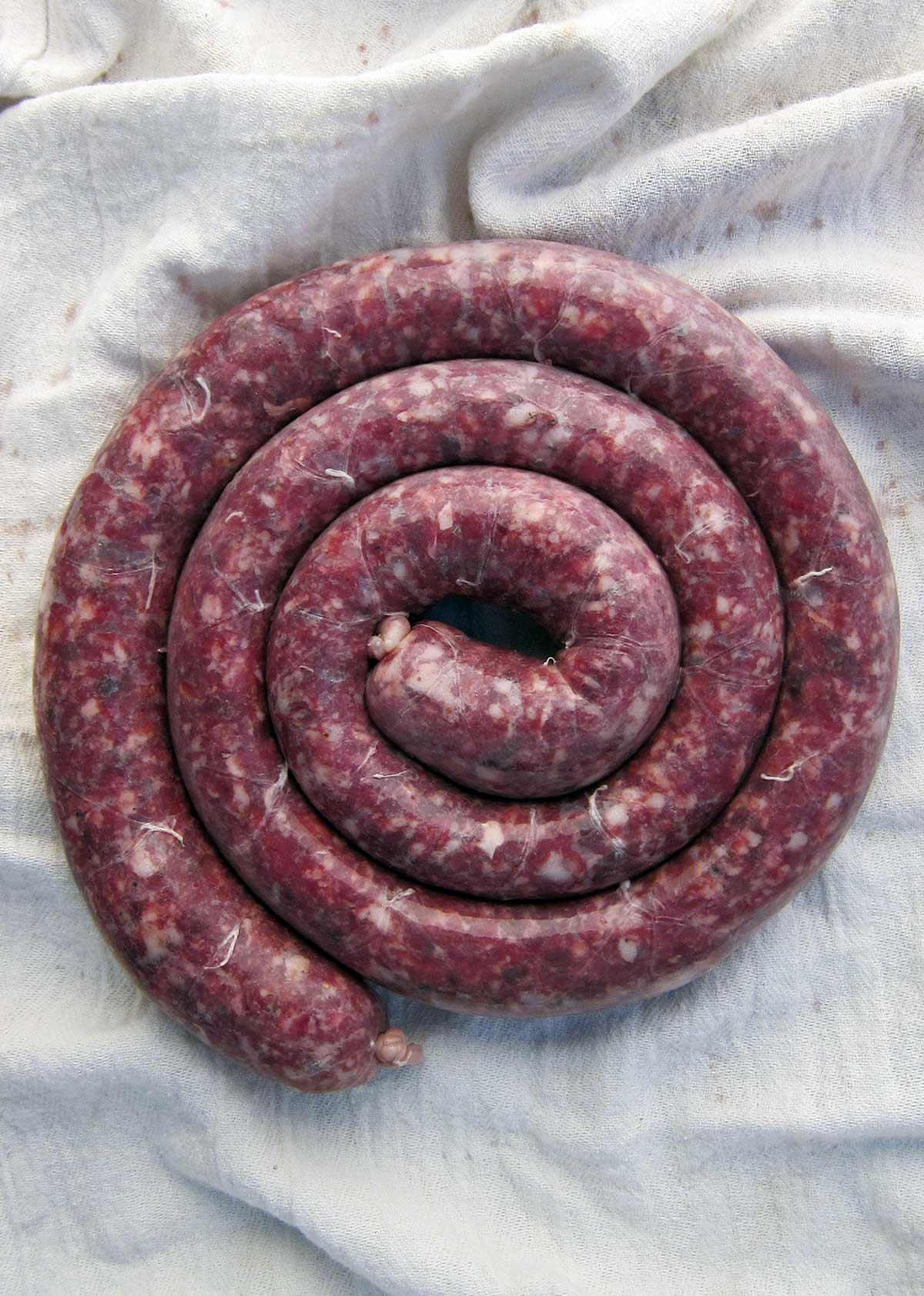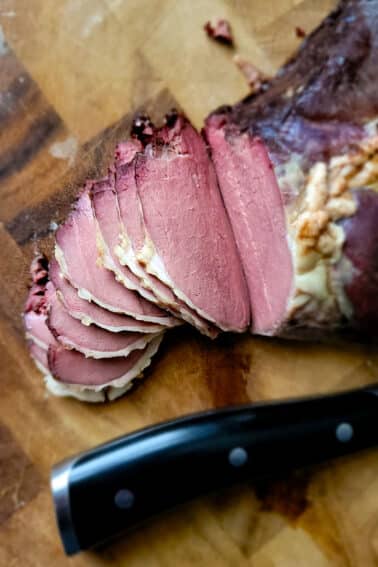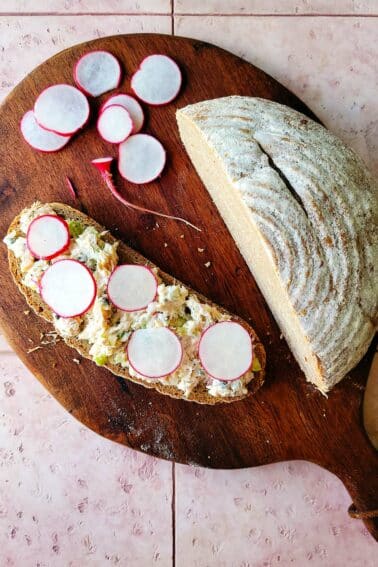Boerewors and Kindness in the Dark
May 12, 2014 | Updated February 26, 2021
As an Amazon Associate I earn from qualifying purchases.
It’s cold. Colder than I ever expected Africa to be. I sit on a box in the tiny yard behind my host’s home, a forbidding, one-story concrete box with only few windows, each set higher than a man. There are bars on them. A six-foot concrete wall surrounds the yard, shielding me from the rest of Kliptown. I am shaving.
I trim my stubble with a disposable razor used I-don’t-know-how-many-times, holding a broken mirror in my other hand to see. A bowl of frigid water sits between my legs. I have no shaving cream. A little boy, who his mother says is ten but who looks half that, stares at me while I shave. I smile at him. He doesn’t smile back. He keeps staring. As I finish, he reaches out a little hand to touch me. An act of affection? No. He smears his hands across my forearm, as if trying to wipe something off. My white skin, burned brown by the African sun, doesn’t budge.

I’m startled by a girl’s voice behind me. “He’s never seen a white man up close,” his sister says. “The other boys tell him that white men are devils, that they paint their skins to scare us.” Images of Apache and Sioux warriors in warpaint burst into my mind, and I smile at the irony.
Their mother, Mary, appears at the back door. “It’s light enough. We can go now.” I rise to leave and the boy’s sister, whose name is lost to me, touches my arm. “Thank you for cooking for us last night.”
It was the least I could do.
This memory, this cold morning in a suburb of Soweto, still rings sharp in my mind nearly 20 years later. I was a young reporter then, eager to make a name for myself. I’d studied South Africa in college, and had just earned a graduate degree in African history from the University of Wisconsin. I spoke Swahili. My dream was to become a foreign correspondent, and I needed to get overseas.
It was early summer, 1995. Nelson Mandela had just been elected as the first black president of South Africa the previous May, and another election loomed. This one appeared to be trickier than the national ballot — it was for all the local political offices, down to municipal elections. It would be mayhem.
I’d secured a few contracts to write stories about the election from some small magazines; enough to pay for the trip at least. I had no firm plan, but I knew I needed to go to Soweto, the black township outside Johannesburg legendary both for violence and the birth of the anti-apartheid movement. I was tagging along with a group of teachers and college professors, and one of their fixers decided to help me out. This was Mary, and she lived in Kliptown, southeast of Soweto.
South Africa in 1995 was a dangerous place. I’d already been mugged at gunpoint a few days before, as I walked through a park near my hotel in Jo’burg. A gang of tsotsis — South African slang for gangsters — surrounded me and one of the teachers. None were taller than my shoulder, and I could easily have kicked the shit out of any one of them. But the one holding the janky old revolver had my attention. I was virtually certain it did not work, but I wasn’t keen on finding out for sure.
I knew the drill, having been mugged several times in New York City as a teenager. I raised my hands and they took my wallet, which I’d already cleared of any valuables except for a hundred rand or so (rand is the South African dollar).
This had happened within sight of an international hotel. Hanging out in Soweto, where police protection would be non-existent, was an order of magnitude more dangerous. Mary drove me to her home. “Don’t look out the windows and don’t take pictures,” she said. Taking a white man home to Kliptown was risky, but she knew a bunch of people who would be willing to talk with me about the upcoming election.
The interviews went really well, but they ran long; it wasn’t every day that Sowetans got a chance to talk to American media, and they had great stories to tell. I went through two pens taking notes. Mary was getting agitated. We needed to leave before sundown. “It is not safe for you to be here at night,” she said.
But night caught us. Mary was visibly nervous as we got into her car. She told me to keep my head down as we drove. Unlike the mugging, this time I was actually scared. She said that tsotsis would stop the car, rob and beat me if they found me in Kliptown at night, or even worse. A white social worker had been “necklaced” the previous week. Necklacing is where they soak a car tire in gasoline and jam it around your arms and shoulders, then set it on fire. A horrible, horrible way to die. I shuddered.
She stopped the car and whisked me into her home, a squat concrete blockhouse. As forbidding as the night outside had seemed, the inside of Mary’s house was its equal and opposite: Music was playing, the walls draped with colorful cloth, shelves of pictures and knick-knacks, her husband Ben lounging on a well-loved couch with an old TV blaring the news, kids playing a board game in another room.

Mary spoke to Ben in what I assumed was Xhosa; I knew they weren’t Zulu, that’s all. Ben looked at me, concerned. I could tell they were arguing as calmly and as quietly as they could, knowing that while I couldn’t understand their language, I wasn’t an idiot. After a few minutes, Ben relented. He walked over the the fridge and opened up two Castle lagers. He handed me one.
“Are you hungry?” Mary asked. I was, but I had a thought. I’d recently left Wisconsin, where I had worked at an Ethiopian restaurant. I knew how to cook, and I knew how to cook African food. Maybe I could cook for them? Mary laughed. “What do you know about cooking?” Apparently men weren’t well-known cooks in her world. I told her I’d been a cook in a restaurant. She insisted that she cook for me, and I insisted that I cook for her, as a small show of appreciation for keeping me safe. “OK, OK,” Mary said. “You know how to cook boerewors?”
She presented me with a big coil of sausage. How hard could it be? “Sure,” I said. I looked in their fridge and in their pantry. There were some unknown greens, beans, onions, a few potatoes. Not many spices. Nothing I could really make Ethiopian food with, but no matter. I set to work.
It was a simple affair. I cooked the greens soul food style, like collards, caramelized some onions and seared the boerewors as a whole coil in their largest frying pan. Everything came out well, but it’s the sausage I remember most. It tasted a lot like the brats I’d eaten in Wisconsin, only with something different. Coriander, maybe? It didn’t matter. It was good, simple, hearty food, and the whole family liked it.
After dinner we watched the news on television. It was indeed mayhem. The elections were still some months away, but Zulu were fighting Xhosa in Durban, whites were circling their wagons in tight communities now that their position had diminished, and Cape Town was suffering from riots and yet another crime wave. I told them about the mugging, and about how nasty New York City had been when I was growing up in the early 1980s. After a few more Castle lagers, I went to sleep in a back room on an old Army cot. As I drifted off, I heard gunfire outside. Not close, but close enough. I did not sleep well.
The next morning, Mary dropped me off at my hotel. I thanked her over and over for all her help, and her hospitality. She shrugged it off. “Just don’t forget us,” she said as she shut her car door to drive away.
It’s been almost 20 years, Mary Mbotho. I have no idea where you are now, if you are even alive. But I haven’t forgotten you, your family, or your hospitality. Thank you.
South African Boerewors Sausage
Ingredients
- 4 pounds pork or wild boar or venison, or a mixture
- 1 pound pork fat
- 35 grams kosher salt
- 10 grams of cracked black pepper, about 1 tablespoon
- 20 grams of coarsely ground coriander seed, about 3 to 4 tablespoons
- 1 gram of ground clove, about a teaspoon
- 3 grams of ground allspice, about 2 teaspoons
- 2 teaspoons brown sugar
- 1/4 cup malt vinegar
- 1/4 cup brandy
- Hog casings
Instructions
- Get out about 10 feet of hog casings and soak them in warm water.
- Cut the meat and fat into chunks you can fit into your meat grinder. Mix together the salt, pepper, coriander, clove and allspice, then mix this with the meat and fat until every piece has a little on it. Refrigerate overnight if you want, but let it marinate at least an hour or so; this helps develop myosin in the mixture, which helps the texture of the finished sausage. When you are ready to grind, put the meat in the freezer until it is between 30°F and 40°F. Put your grinder parts (auger, dies, blades, etc) in the freezer, too, and put a bowl in the fridge.
- Grind one-half of the mixture through the coarse die on your grinder, and half through the fine die. This creates a more interesting texture. If your meat mixture is still at 35°F or colder, you can go right to binding. If it has heated up, you need to chill everything back down. Use this time to clean up the grinder.
- Once the meat is cold, put it in a large bin or bowl and add the sugar, vinegar and brandy. Mix well with your (very clean) hands for 2 to 3 minutes — a good indicator of temperature is that your hands should ache with cold when you do this. You want to to mix until the meat binds to itself. You can also do this in a stand mixer set on its lowest setting, but I find you don’t get as good a bind as you do when you do this by hand.
- You now have boerewors. Most people stuff this into long coils of about 1 to 2 pounds each. Stuffing sausage is easier with two people, one to fill the links, the other to coil, but I do it solo all the time. Stuff the links well but not super-tight, as you will not be able to tie them off later if they are too full. Don’t worry about air pockets yet. Stuff the casing until you get a coil about a foot wide, leaving lots of room on either end to tie them off; I leave at least three inches of unstuffed casing on either end of the coil. Tie off one end of the coil. Gently compress the sausage in the casing from the other end. Look for air pockets. To remove them, set a large needle or a sausage pricker into a stovetop burner until it glows (this sterilizes it), then pierce the casing at the air pockets. Tie off the other end of the coil and repeat with the rest of the sausage.
- Set your coil on a rack for an hour or so to dry. You can do this overnight in a fridge if you want. Once dried a bit, the boerewors can be refrigerated for up to a week, or frozen for up to a year.
Notes
Nutrition
Nutrition information is automatically calculated, so should only be used as an approximation.






Hank. Thanks for the link – used the recipe and was great.
I never had or seen Jerky, only read about it. The best short description is probably this as on Wikipedia:
Biltong differs from jerky in three distinct ways:
• The meat used in Biltong is much thicker; typically Biltong meat is cut in strips approx 1″ (25 mm) wide – but can be thicker. Jerky is normally very thin meat.
• The vinegar, salt and spices in Biltong, together with the drying process, cures the meat as well as adding texture and flavor. Jerky is traditionally dried with salt but without vinegar.
• Jerky is often smoked, Biltong is never smoked.
Depending on the animal and cut, it can be anything from 6 inches to 2 feet in length. Biltong and Droëwors can be made from almost any animal. Beef is used year round for both, but during hunting season everybody wants game. (In SA it is normally Eland, Kudu, Gemsbok and your smaller species like Blesbok, Rooibok and Springbok – bok meaning buck). Never pig or anything with feathers.
Biltong is always cut with (along) the grain and as indicated above, at least 1 inch to 2 inches thick. When it is ready to eat, you slice it across the grain in pieces as thick as you want. Normally a ¼ inch – but preference will differ. Just enjoyable bite size pieces. (Some like the Biltong a little bit ‘wet’ i.e. soft with reddish color in the center whilst other totally dry. Obviously the latter will keep longer – up to year if properly stored). These days people put the biltong in the freezer after it is ready and take out as needed.
Both Biltong and Droëwors have the following in common: The same basic spices are used and the curing process is the same. Vinegar, salt, brown sugar, coriander, and maybe pepper. Cloves when you deal with game.
It is food that keep and and rich in protein. Especially good sustenance when you travel and food can spoil.
See this images:
https://www.google.co.za/search?q=Biltong&rlz=1C1CHWA_enZA521ZA522&source=lnms&tbm=isch&sa=X&ei=eV6CU-2mD8jY4QSey4GADg&ved=0CAgQ_AUoAQ&biw=1366&bih=643
https://www.google.co.za/search?q=droewors&rlz=1C1CHWA_enZA521ZA522&source=lnms&tbm=isch&sa=X&ei=wF6CU57_H4ua7QbJ94CYAw&ved=0CAgQ_AUoAQ&biw=1366&bih=643
Generic recipe
Farm-Style Droëwors
(Makes about 4 kg’s)
4.5 kg beef (Use shoulder , neck, chuck, ribs – no sinewy meat) or venison or mixture – NO pork
2.5 kg fatty mutton (Use breast or shoulder) NO pork – it will go rancid
15 ml ground cloves
15 ml grated nutmeg
12 g whole coriander
90 g fine salt
15 ml brown sugar
400 ml vinegar
90 g mutton or hog sausage casings
Place the coriander seeds in a dry frying pan and heat, stirring constantly until they become light brown. Remove them to a coffee grinder or pestle and mortar and crush the coriander seeds. Pass the crushed seeds through a sieve to remove the husks. Cut the meat inot 50 mm cubes, and mix together with all ingredients except the vinegar and casings. Mince the meat using a grinder with a coarse blade. Sprinkle the vinegar over the minced meat mixture and mix lightly (If you work too much with the meat, it will lose the coarse consistency)Prepare the casings and stuff the mixture loosely into them. Dip the sausages in a mixture of 4.5 liters boiling water and 350 ml vinegar, then hang them over wooden rods that are thick enough in diameter to prevent the inner surfaces of the sausage from touching. Dry the sausage in a cook draughty place for 24 hours, then remove the sausage and flatten by rolling across a cutting board, so that any pockets of air in the sausage or between the sausage and the casing are removed. (These air pockets can cause mould to set in when the sausage is drying). Put the sausage back over the wooden rods and continue to dry to your taste.
As I do not know the climate situation where you live,I would suggest you build a Biltong Box: See this as example https://thebiltongbox.blogspot.com/. It looks good to me. (Here, close to the coast, we must always be on the watch for humidity which can cause moulding).
I would extend the height of the drying area with at least 40 cm and maybe bit wider. You want low humidity and heat with movement of air.
I am sure you will come up with something good!
JP
JP: I understand. I get similar comments from Poles and Hungarians whenever I make “their” sausages. I make no claim to being “the” recipe on anything, although I do test my recipes again and again until they’re good…
I really want to make droewors! And how is biltong different from jerky?
Pig tails? Hmmm… try this: https://www.nosetotailathome.com/2010/09/06/crispy-pigs-tails/
Hi Hank
I am just a bit finicky about all things South African. I am quite sure your recipe will taste great. (All the right spices). I read your “about ” section and respect that. Strange, in South Africa it is not that easy to follow the lifestyle that you do. Ever tasted Biltong and droëwors – as hunter you will love that. That said, I had a lovely taster of Chicken feet, giblets and liver today. I also have some pig tails in the freezer – any ideas?
JP
JP: Yep, I’ve read that legal definition. And you will note that my recipe calls for pork, beef, venison, etc or a mixture of said meats. If you want to mix 50-50 beef and pork to meet the legal definition, go right ahead. You should know that this is a wild food website, so I don’t work with domesticated meats, only wild ones. I bet if you make this recipe, you’ll like it!
Hi Hank
I am a born and bred South African. I love food blogs and regularly search the web for new ideas and to read how other cultures prepare their food. As I love the Nose To Tail thing, I visited https://www.nosetotailathome.com/ and from there landed on your site. And lo and behold, the word Boerewors appeared. An Afrikaans word on a site from abroad? I was surprised. I enjoyed the blog and will definitely visit it regularly in future. Boere (Farmers’) wors (Sausage) must, by South African law, contain at least 90% meat of which a max of 30% might be fat (The other 10% spices, seasoning and liquids). It must contain beef. Normally more than 50% of the 90% will be beef. The rest pork and or lamb. Boerewors may not contain any mechanically recovered meat. Fat will be that of pork and lamb. Although your spices are okay, you cannot call your recipe Boerewors. At best you can call it Bangers or Venison Wors. I will mail you some interesting things if you are interested. Regards, JP Kruger
Catching up on my HAGC reads today. Been too busy baking lately.
Cooking is such a hospitable gesture! And lucky are those to have tasted this. Great story. Love the recipe, too!
Good one Hank and thanks for a great blog. I haven’t visited the site for a while and when I pop in I get a nice taste of South Africa. B-wors can be such a wonderful addition to a bbq as a side meat or as a pre-snack! Unfortunately butcheries and especially chainstores are foresaking quality ingredients for profit – resulting in a gastly experience.
But when homemade or by a proud butcher with quality meat it is superb.
One can mix venison (deer, moose etc) and beef brisket for the meat filling.
Try toasting the coriander lightly for a more intense flavour.
Polenta with tomato sauce and some fried sausage will get you to the “pap and sauce” traditional way of eating it.
Makes an excellent hotdog type snack as well.
That’s a great story. And the wors looks beautiful.
So cool to see boerewors being made fuss of. As a South African I go into withdrawal in the States, without it. I tinkered with a recipe for years till I was happy with it and I now have it made up at a butcher in Brooklyn, NY, for home consumption (Los Paisanos – they have my recipe on file in case anyone wants to order some, locally).
It is very unusual to have pork-only wors, btw. That is Namibian-style (German colonial influence); it’s usually mostly beef, with some fatty pork. I also like lamb/beef/pork fat version.
https://66squarefeetfood.blogspot.com/2011/06/boerewors-recipe.html
Hank – in Seattle, the butcher/rancher that I like (Sea Breeze on Vashon Island) makes boerewors and other really neat stuff. I had my first Braai day a couple of years ago; a friend married a woman from SA, and she has taught me many things about cooking over open fire! 🙂 (Great blog; wish I’d known you when I was in school at UC Davis…)
Nice shirt. 🙂
Hank, what a remarkable story. My family has been buying boerewors from Morant’s on Franklin for years, though its probably been a good 5-6 years since I’ve been there. They were sold as links rather than a coil, but based off the spices in your recipe and my recollections of Morant’s version, I think they are probably similar.
What do you think about making this with goose? Would the flavors work well?
This is a link to an article titled “The beauty of solo travel”. Hope you’ll read the article and send your current blog post to the article’s author. He’s soliciting stories and yours is incredible. I hope, too, your friend Mary gets your message somehow.
https://www.baltimoresun.com/travel/sc-trav-0415-travel-mechanic-20140415,0,4290892.column
Love your blog, thank you for the great recipes!
Jeff’s kosher sausages in LA sells them, though I can’t tell you how authentic they are.
Great story, and great shirt Hank!
Don: I use metric when you really need precision, i.e., salt content. But I prefer pounds and tablespoons etc. Being an American, it’s what I know best. But sometimes ya gotta be exact, thus the grams.
Hey Hank, any particular reason you’re mixing imperial and metric units other than to keep me on my toes switching my scale’s settings? Pounds, grams, teaspoons, cups… I’m going to start singing “one of these things is not like the other.”
Just curious.
What an amazing story Hank! South Africa might be one of the most interesting places in the world. I had the privilege of visiting when I was in college on Semester at Sea. It was no where near as dangerous as when you where there, but still needed a lot of caution…especially in District 6 and Crossroads. What a story.
I had Boerewors once when I was there and it was just as you described. I pretty much forgot about it until a few months ago when I stumbled upon it at a little meat market north of Denver. Their version didn’t quite gel with my memory of what it tasted like.
I can’t wait to try yours and thanks for the great work!
Boerewors was one of the first sausages I’ve ever made. I’ll never forget mixing up the bind and smelling the richness of the coriander… so good! And so evocative of South Africa.
Have you ever tried drying it out, for droewors? I just tried my first salami—the simple Tuscan out of Ruhlman and Polcyn’s Charcuterie—and it came off a charm, so I’m ready for more. 🙂
The really traditional accompaniments to boerewors are “pap en sous”: maize porridge and a sauce of onions and tomatoes. All washed down with beer.